We Cooked Bacon 15 Ways. Here’s the Difference.
Updated: Dec. 09, 2022

Crispy or droopy? Cast iron or microwave? This complete guide to cooking bacon clears up all your questions.
Our Test Kitchen experts experimented to find the best technique for makin’ bacon. (Don’t worry, we figured out the best brand of bacon, too.) From baking bacon, to throwing it on a skillet, we’ve tried it all. Surprise, surprise: it all comes down to personal taste.
Whether you like it crispy, chewy or even a little floppy (hey, no judgment!), you’ll discover the Sunday-morning method for you and your family here. Switch up the cook time and vessel however you please for a side dish that’s simply perfect. Or dice the slices to put in one of these bacon-filled favorites.
Psst! Our new line of cookware whips up bacon especially well.
In a Cast-Iron Skillet
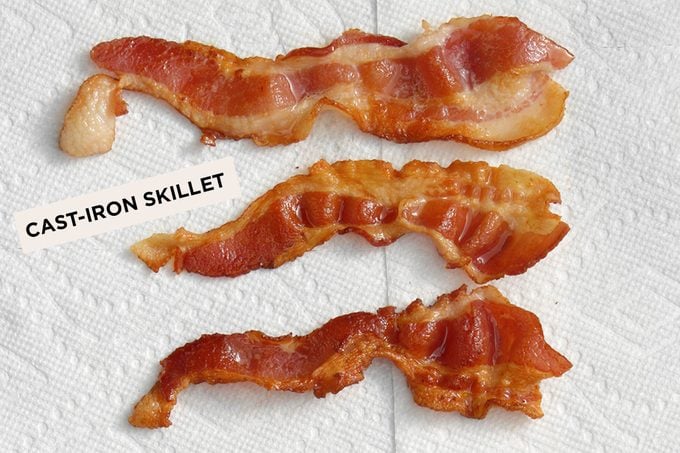
Method
Arrange bacon in a single layer in a cold cast-iron skillet. Cook on medium-low. Turn bacon occasionally with tongs for even cooking. Cook to desired doneness. Drain on paper towels.
Cook Time by Texture
- Chewy: 12 min.
- Crisp-Chewy: 14:30 min.
- Crisp: 16 min.
Pros
- Nostalgia factor (cast iron is so retro!)
- Quick method
- Helps keep your cast-iron pan seasoned
Cons
- Bacon partially sticks to the pan and breaks
- Cooks only 5-6 strips at a time
- Splatters grease on the stovetop
- Requires near-constant turning to cook evenly
Learn how to clean grease off common kitchen surfaces, including your stovetop.
In a Nonstick Skillet
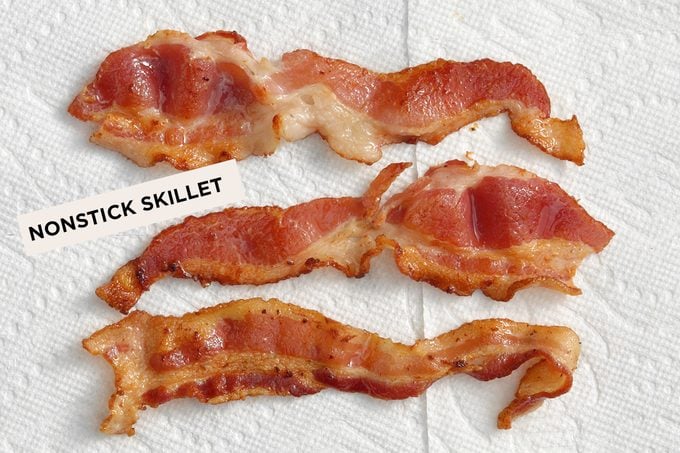
Method
Arrange bacon in a single layer in a cold nonstick skillet. Cook on medium-low. Turn bacon occasionally with tongs for even cooking. Cook to desired doneness. Drain on paper towels.
Cook Time by Texture
- Chewy: 14:45 min.
- Crisp-Chewy: 16:20 min.
- Crisp: 19:30 min.
Pros
- Faster than oven methods
- Easy cleanup once grease is drained
Cons
- Bacon partially sticks to the pan and breaks
- Cooks only 5-6 strips at a time
- Splatters grease on the stovetop
- Requires near-constant turning to cook evenly
Directly on a Sheet Pan
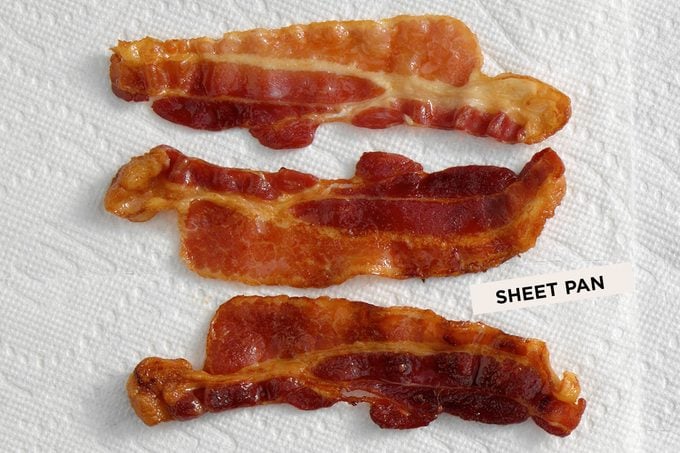
Method
Arrange bacon in a single layer in a 15x10x1-in. sheet pan. Bake at 400˚F to desired doneness. Remove bacon to paper towels.
Cook Time by Texture
Chewy: 16:40 min.
Crisp-Chewy: 16:40 min.
Crisp: 25 min.
Pros
• Cooks nearly a pound of bacon at once
• Does not require turning while cooking
• Bakes all strips of bacon evenly
Cons
• Bacon partially sticks to pan and breaks
• Dirties pan significantly
Test Kitchen tip: Line the sheet pan with foil and cook the bacon on top. The grease collects on the foil, which makes for easier cleanup.
On a Baking Rack over a Sheet Pan
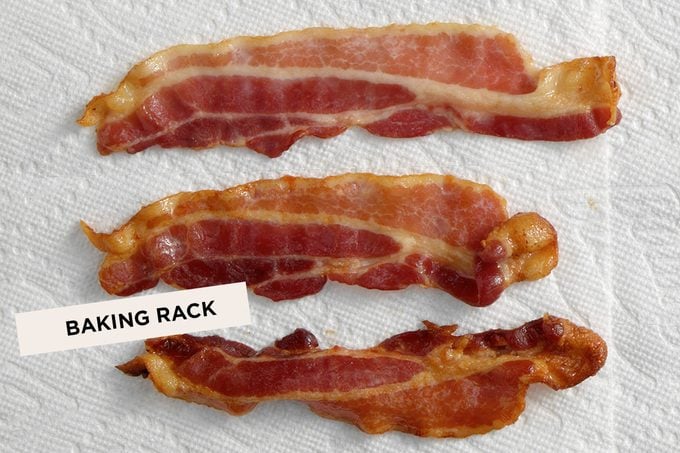
Method
Place a wire rack in a 15x10x1-in. sheet pan. Lightly spritz rack with cooking spray. Arrange bacon in a single layer on prepared rack. Bake at 400˚F to desired doneness. Remove bacon to paper towels.
Cook Time by Texture
Chewy: 17 min.
Crisp-Chewy: 23 min.
Crisp: 26:30 min.
Pros
• Cooks nearly a pound of bacon at once
• Does not require turning while cooking
• Bakes all strips of bacon evenly
• Bacon doesn’t stick to rack
Con
• Pan gets messy from drippings
In a Microwave
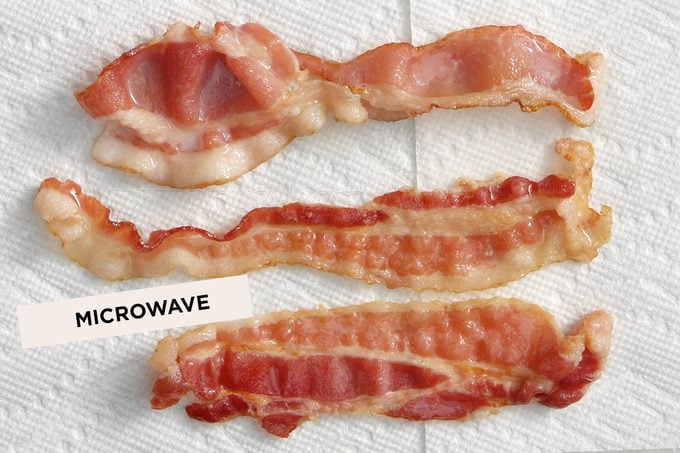
Method
Place 2-3 paper towels in a microwave-safe dish. Arrange bacon in a single layer on paper towels. Place 1-2 paper towels over bacon. Microwave on high for about 1 minute per piece of bacon. Remove bacon to a serving platter and let stand 1 minute.
Note: The bacon should look undercooked as it comes out of the microwave—there will be carry-over cooking.
Cook Time by Texture
Chewy: 40 sec./strip
Crisp-Chewy: 50 sec./strip
Crisp: 60 sec./strip
Pros
• Can make a few bacon strips at a time
• Bakes all strips evenly
• Easy and fast
• Minimal cleanup (paper towels absorb grease)
Con
• Bacon is more chewy than crisp
Next up: Make sure you’re not making these mistakes when cooking bacon.



















